Another Friday, another list! This week we look at the Rolex Milgauss, a quirky engineer’s watch that, like many of Crown’s classics, first appeared in the 1950s. However, unlike the Submariner and GMT-Master, the Milgauss has not always been part of the brand’s collection since then. This is one of the reasons why I couldn’t make a list of 5 Rolex Milgauss references. Simply because it doesn’t exist. Strictly speaking, there are only four Milgauss reference numbers. But most people know that you can choose from five of your favorite Milgauss models, depending on the dial variation. Let’s take a closer look!
It’s no secret that engineer watches have never been the biggest sellers in the industry. However, these watches will definitely attract enthusiasts. Engineer watches are beloved by collectors around the world for their quirky looks and anti-magnetic properties. There’s something practical and ultra-technical that appeals to fans of mechanical watches. The most famous examples are undoubtedly the IWC Ingenieur, Omega Railmaster, and Rolex Milgauss. All three have a rich history dating back to the 1950s and are known for their combination of appearance and functional characteristics. This is one of the reasons we’re eagerly awaiting the return of the Rolex Milgauss. But while we wait, let’s take a look at five Milgauss models in the Rolex catalog that demonstrate this outlier’s brilliance.
Image: Christie’s
Rolex Milgauss Ref. 6543
Rolex’s first Milgauss Ref. 6543 is said to have been introduced in 1954/55. However, some documents mention a later date, so there seems to be some mystery as to the year of its introduction. As many of you may know, this name comes from the French word mil, meaning “thousand”, and gauss, the scientific unit of magnetism.
The first Milgauss looked similar to the Rolex Submariner, but with a different dial and dauphine hands. As you can see, this watch didn’t yet have lightning bolt hands, and the rotating bezel featured a Submariner-style 60-minute insert. The honeycomb dial featured triangular hour markers at 3, 6, and 9 o’clock, which immediately changed the character of the watch.
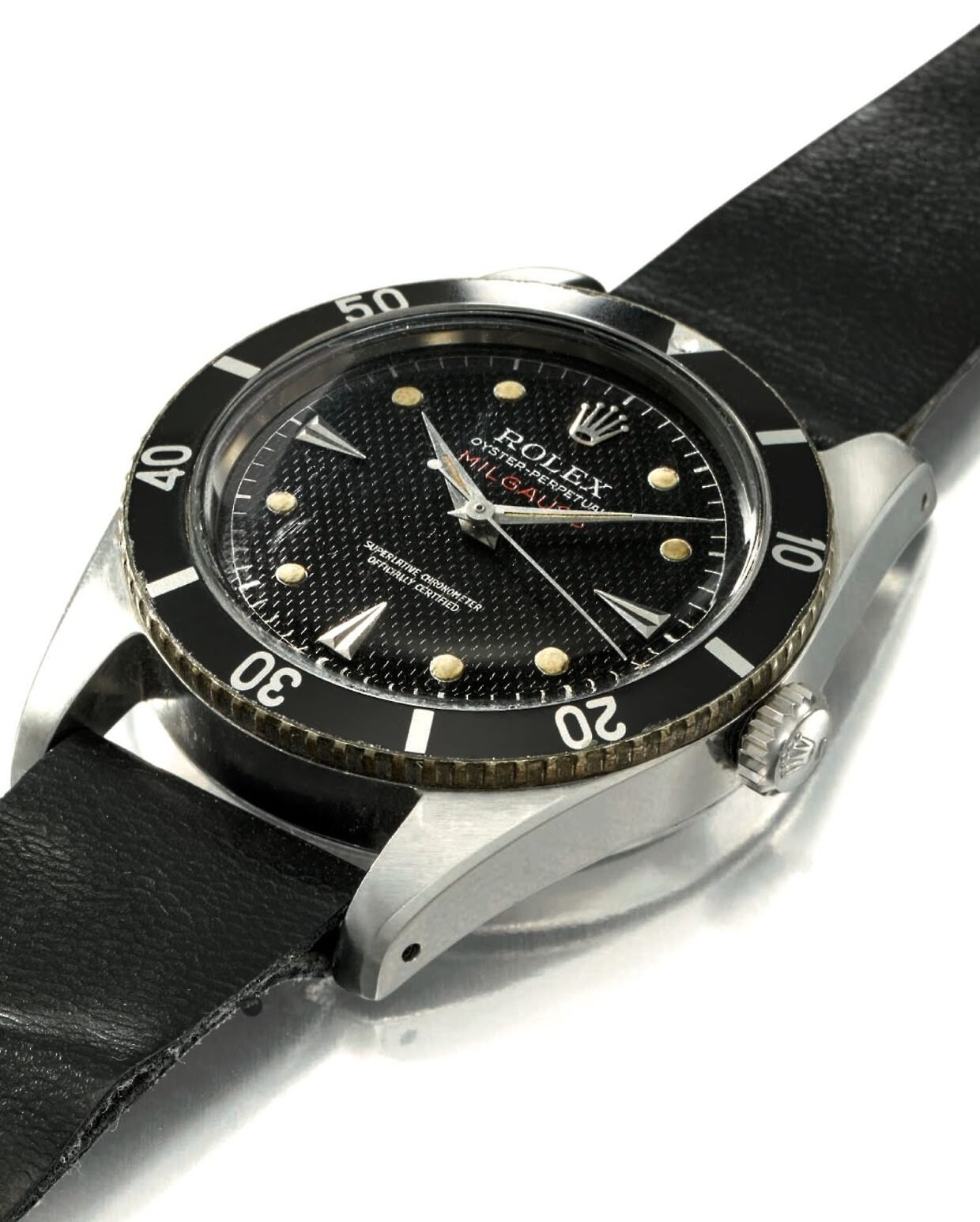
Image: Christie’s
Another major difference compared to other Rolex models was hidden inside the 38 mm stainless steel case with an odd lug spacing of 19.5 mm. The automatic movement was placed inside a soft iron Faraday cage to protect it from magnetism. As for the caliber, Rolex used the 1065 for the first model. This automatic movement was derived from the legendary Rolex caliber 1030, clocked at 18,800 vibrations per hour, and had a power reserve of 48 hours.
Rolex provided the scientists at the Geneva-based European Research Organization (CERN) with proper testing in the field. Scientists at CERN have confirmed that the watch can withstand magnetic fields of up to 1,000 Gauss without adversely affecting timekeeping. It is believed that Rolex made perhaps only 150 Milgauss Ref. 6543. As you can understand, even fewer people survived. That’s why they command astronomical prices when put up for auction.
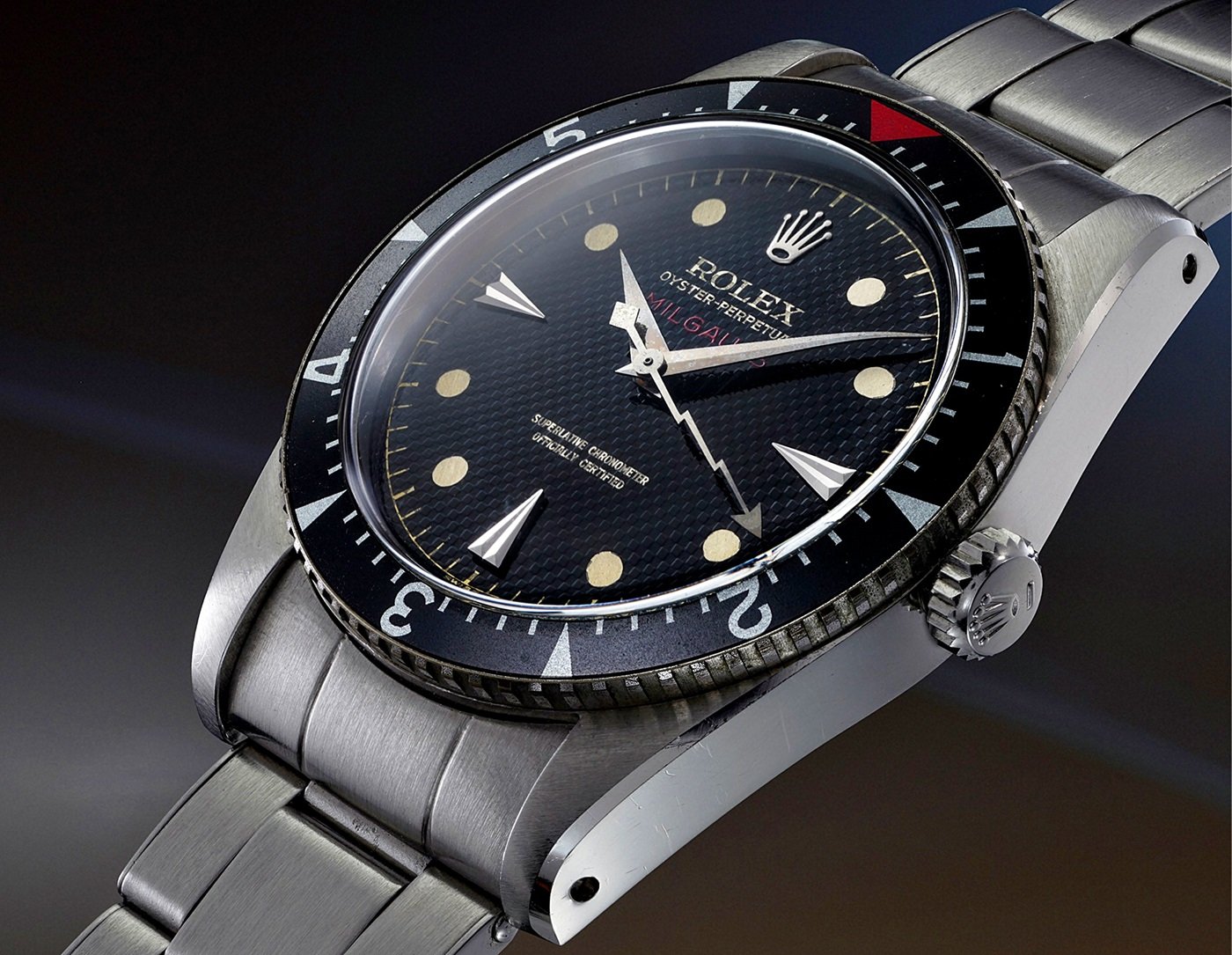
Image: Phillips
Rolex Milgauss Ref. 6541
Shortly after the release of ref. 6543, the famous Rolex Milgauss Ref. 6541 replaced it. This is where Milgauss really shines. All that remains is the 38mm case and honeycomb dial. However, Rolex replaced the second hand with the now famous lightning bolt shaped hand. Additionally, this reference featured a new bezel insert consisting of six divisions and a large red triangle that matches the red Milgauss name on the dial.
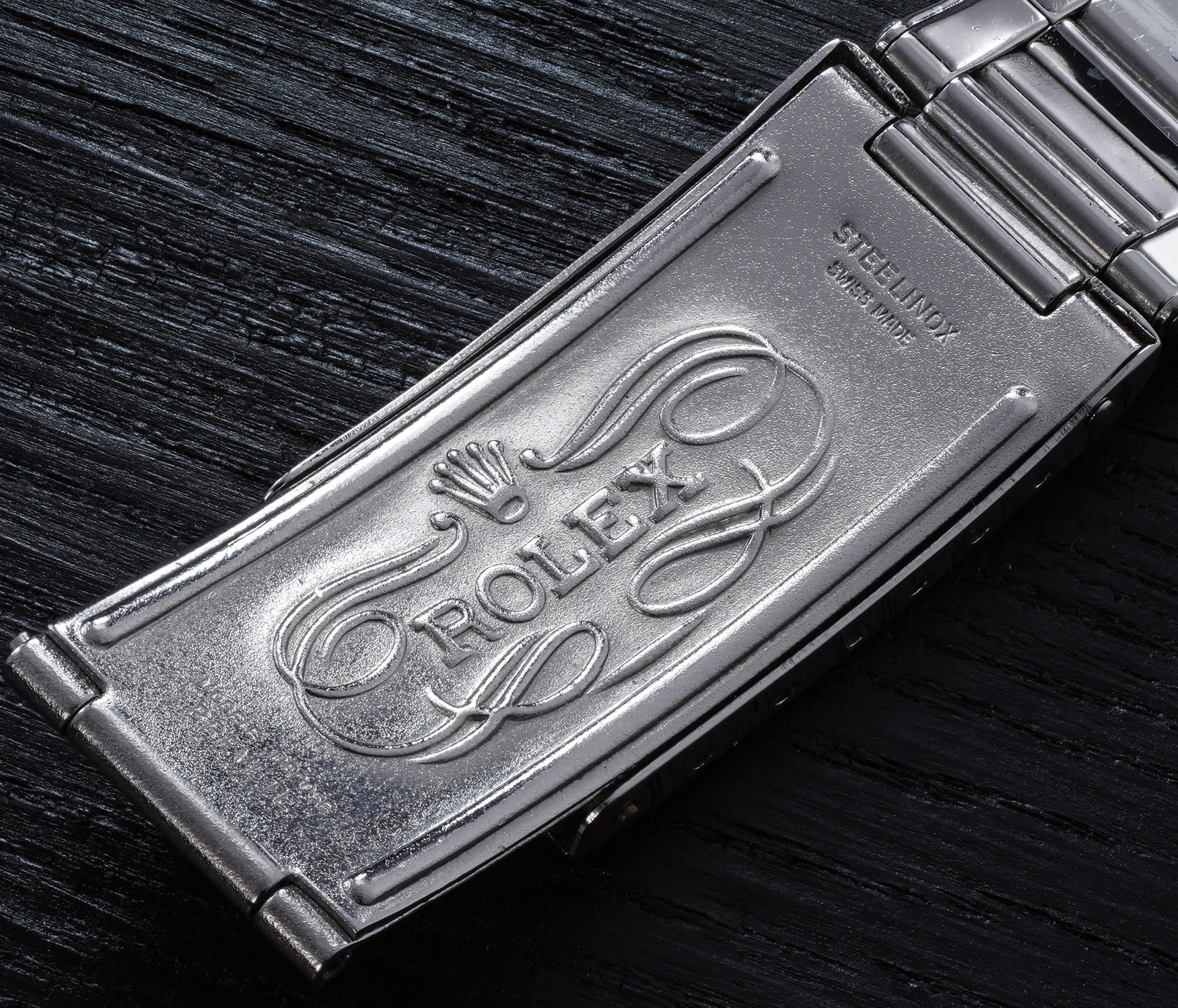
Image: Phillips
According to Rolex’s advertising, the new bezel insert “serves as a simple stopwatch or for timing various operations.” Apart from its functional purpose, it gave the watch a unique personality.

Image: Phillips
When it comes to movement, the story is pretty confusing. Rolex used Caliber 1066M to power the Ref. 6541. It is based on the regular caliber 1066 and uses parts made of anti-magnetic material, including the mainspring. The brand then began using the caliber 1065M, also known as the caliber 1080, which was created specifically for the Milgauss.
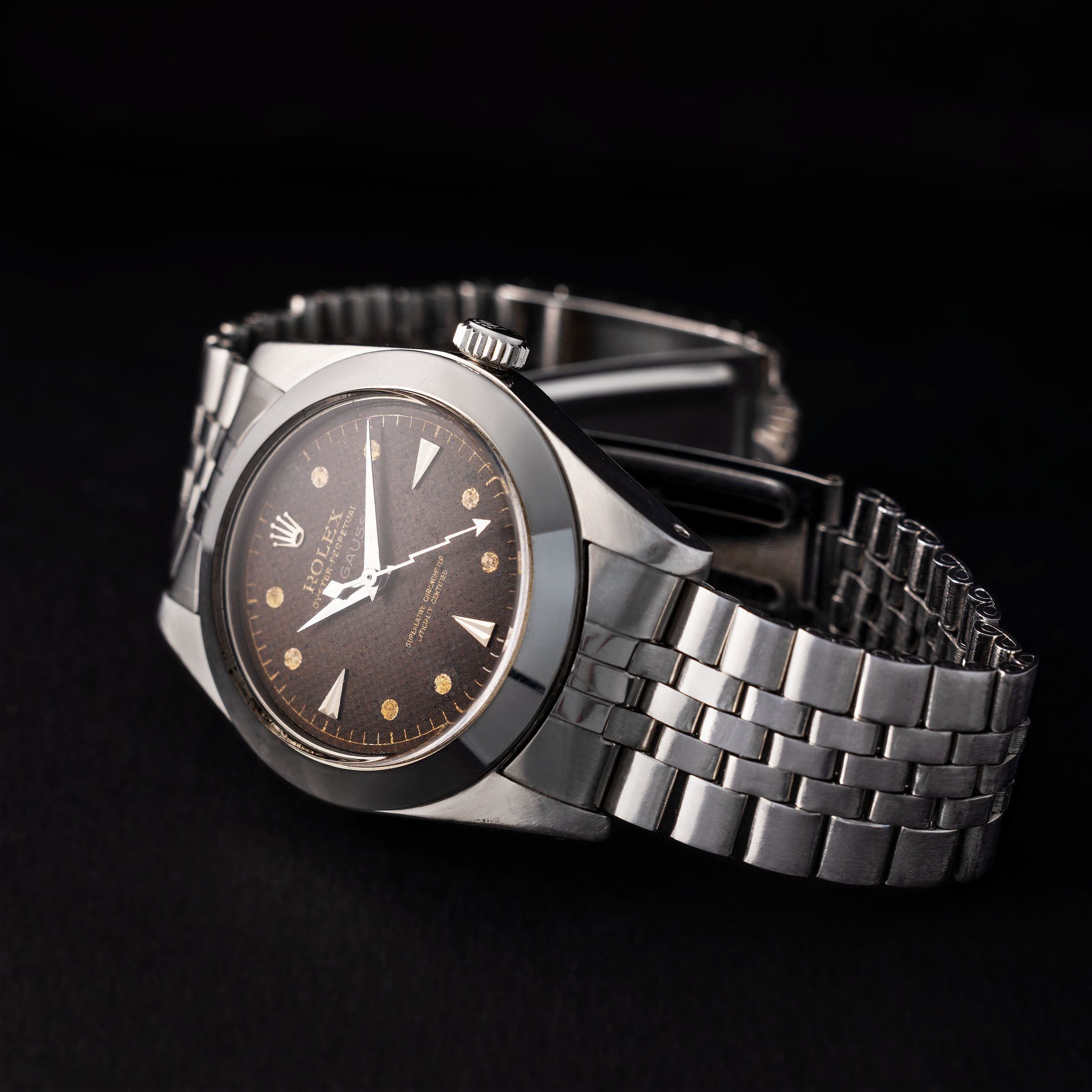
Image: Monaco Legend Auction
When Milgauss switched to a fixed bezel
Rolex has also updated the structure of the anti-magnetic inner case. The new Faraday cage still had an iron ring around the movement, but was equipped with an additional inner case back on top of the regular case. While the first reference had a thick caseback, this new model has a regular caseback thanks to its new construction. In later stages of production, Rolex also produced a version of the Ref. 6541 has a fixed polished stainless steel bezel rather than a rotating bezel.
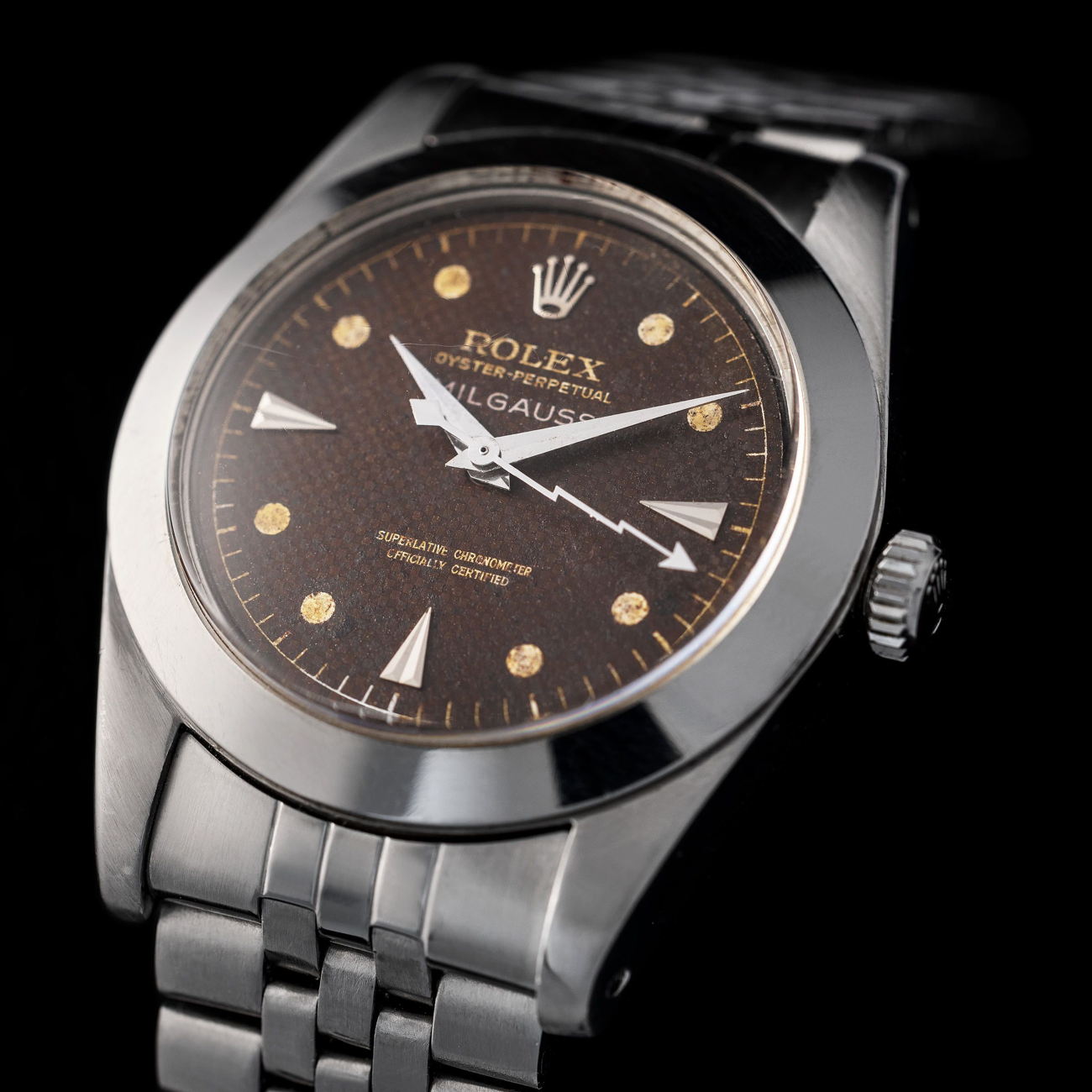
Image: Monaco Legend Auction
These models were probably made for the American market. However, it was less clear when compared to the version with a rotating bezel. In addition to the intended purpose mentioned in the advertisement, the rotating bezel certainly gave the Milgauss Ref. 6541 Many characters.
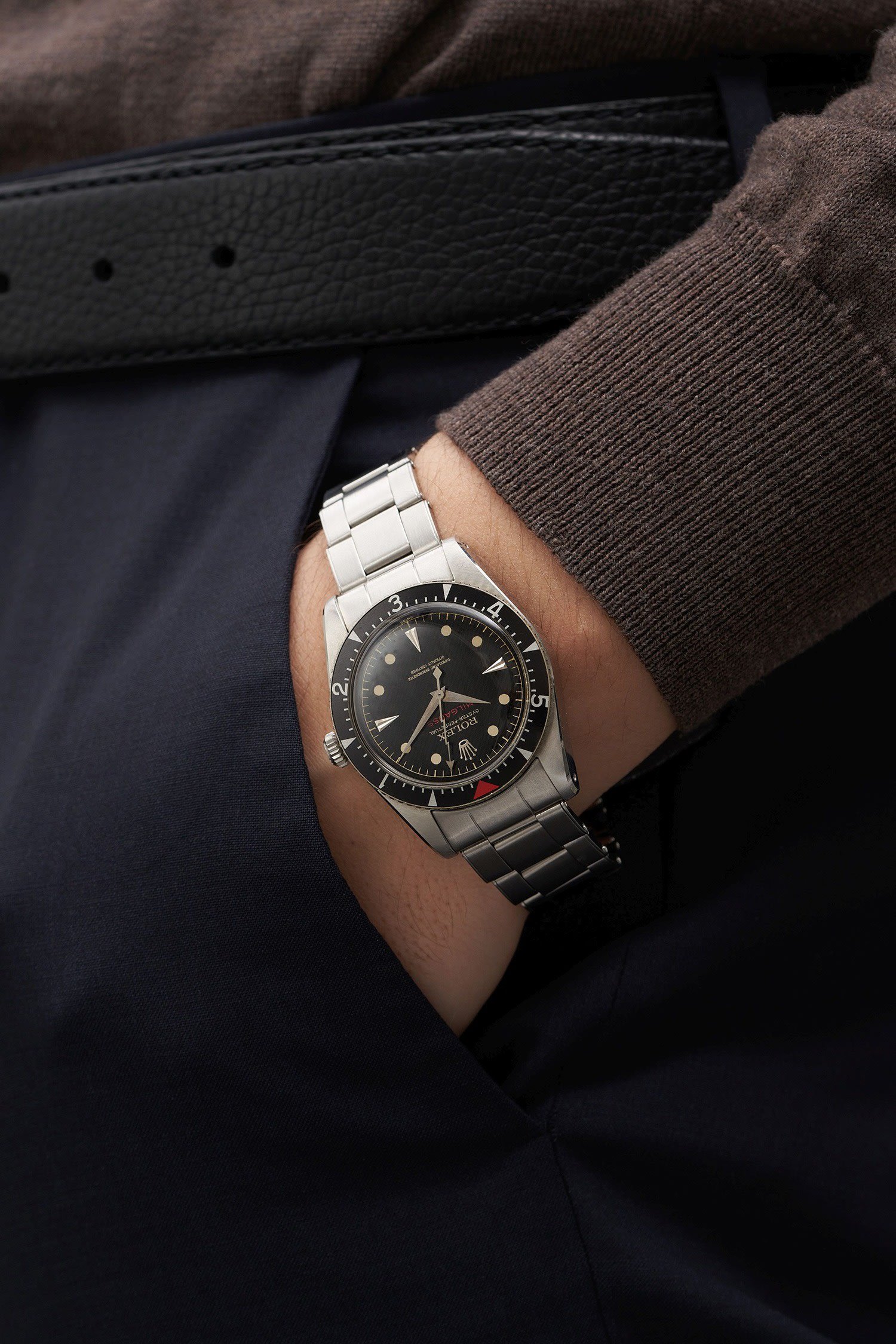
Image: Phillips
Simply put, I love the quirky style of the 6541, which hints at the purpose it was built for. As I explained in my article about the IWC Ingenieur, my father was an engineer, so I have a strong interest in engineer watches. For me, the Milgauss Ref. 6541 perfectly embodies an engineer’s watch.
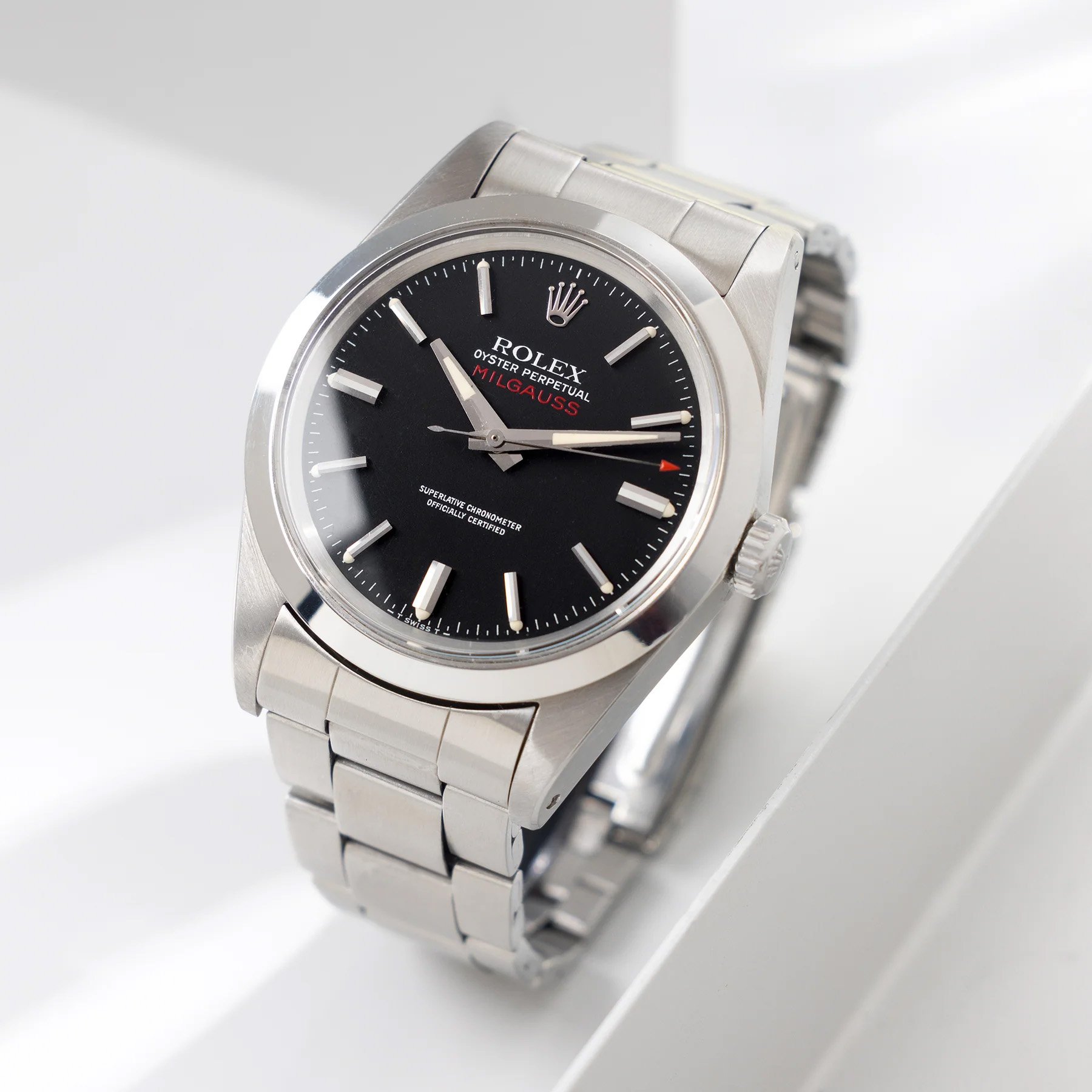
Image: Boulan & Sons
Rolex Milgauss Ref. 1019
In 1960 Rolex replaced the Ref. New Ref. 6541 1019. This Milgauss is a big change from the previous two watches. This model was produced until 1988, making it one of the longest produced references in Rolex history. As you can see, the watch featured an Oyster Precision style case with a fixed polished bezel. The diameter remains the same at 38mm, but the overall style has changed considerably.
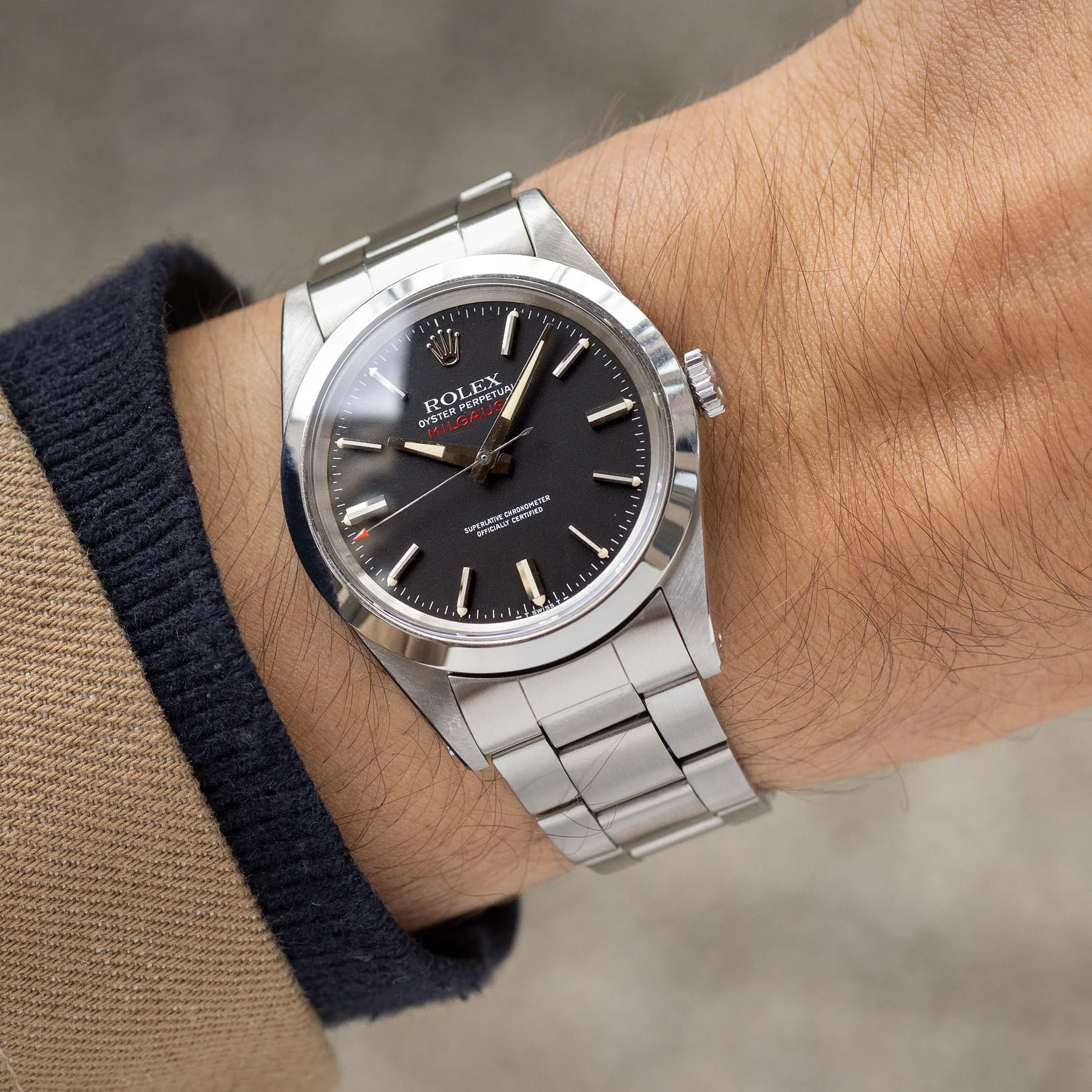
Image: Boulan & Sons
The Milgauss Ref. 1019 was available with a matte black dial or a vertical brushed silver dial. The latter was especially cool. That’s because the brushed finish was previously only used on rare Datejust and Oyster models. There were also versions with glossy black dials, but these were extremely rare. All dials had the Milgauss name written in red to match the red tip of the straight seconds hand. As you can see, the hour and minute hands have also been changed to a shape not often seen on Rolex watches. However, this style blends well with the overall aesthetic.
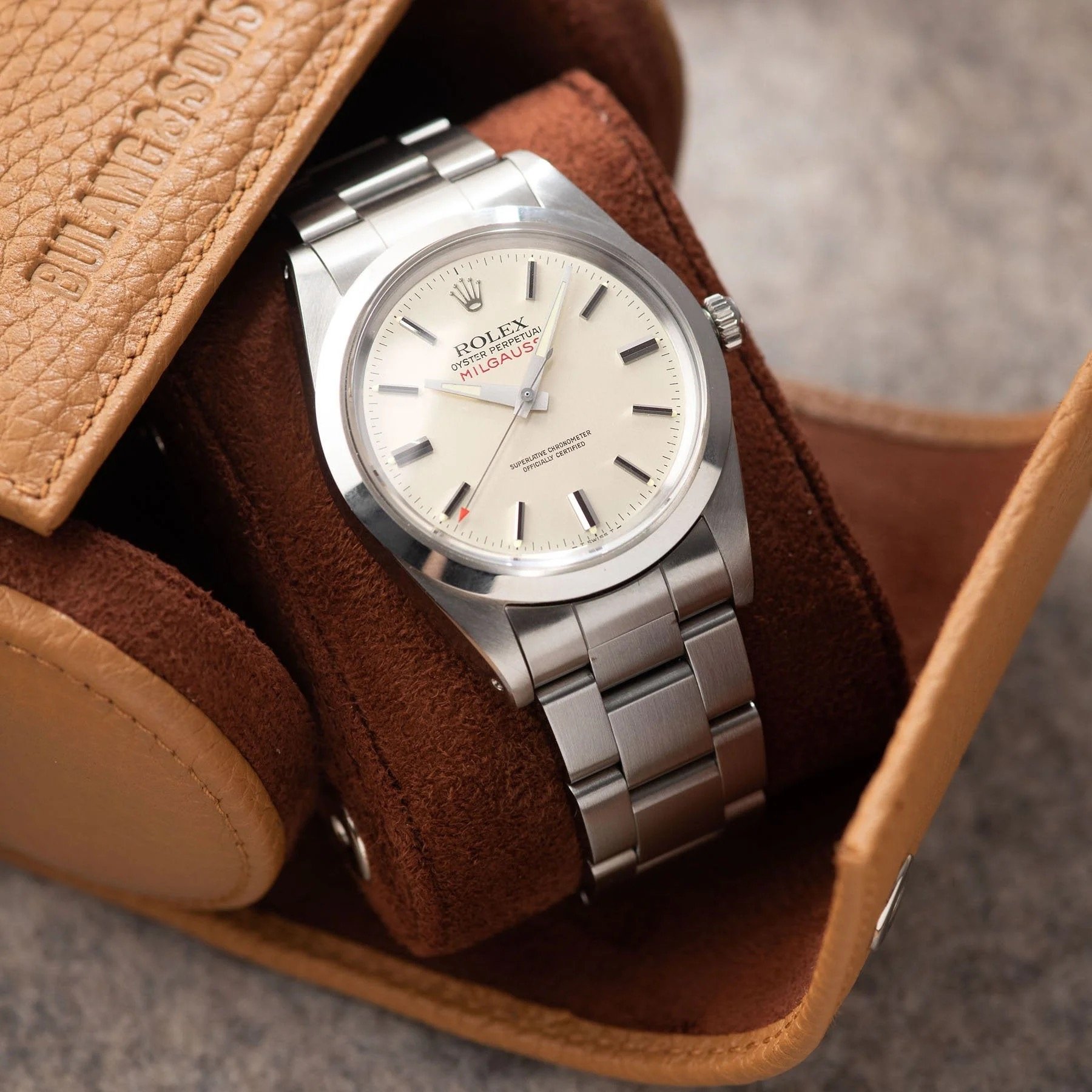
Image: Boulan & Sons
New aesthetics and new caliber
Rolex has done away with the fan-favorite quirky lightning bolt-shaped hands. But while it may be a unique and much-loved feature today, the Milgauss ref. 6541 was never a huge commercial success. So it makes sense that Rolex removed some of the weirdness and replaced it with the simpler-looking Milgauss.
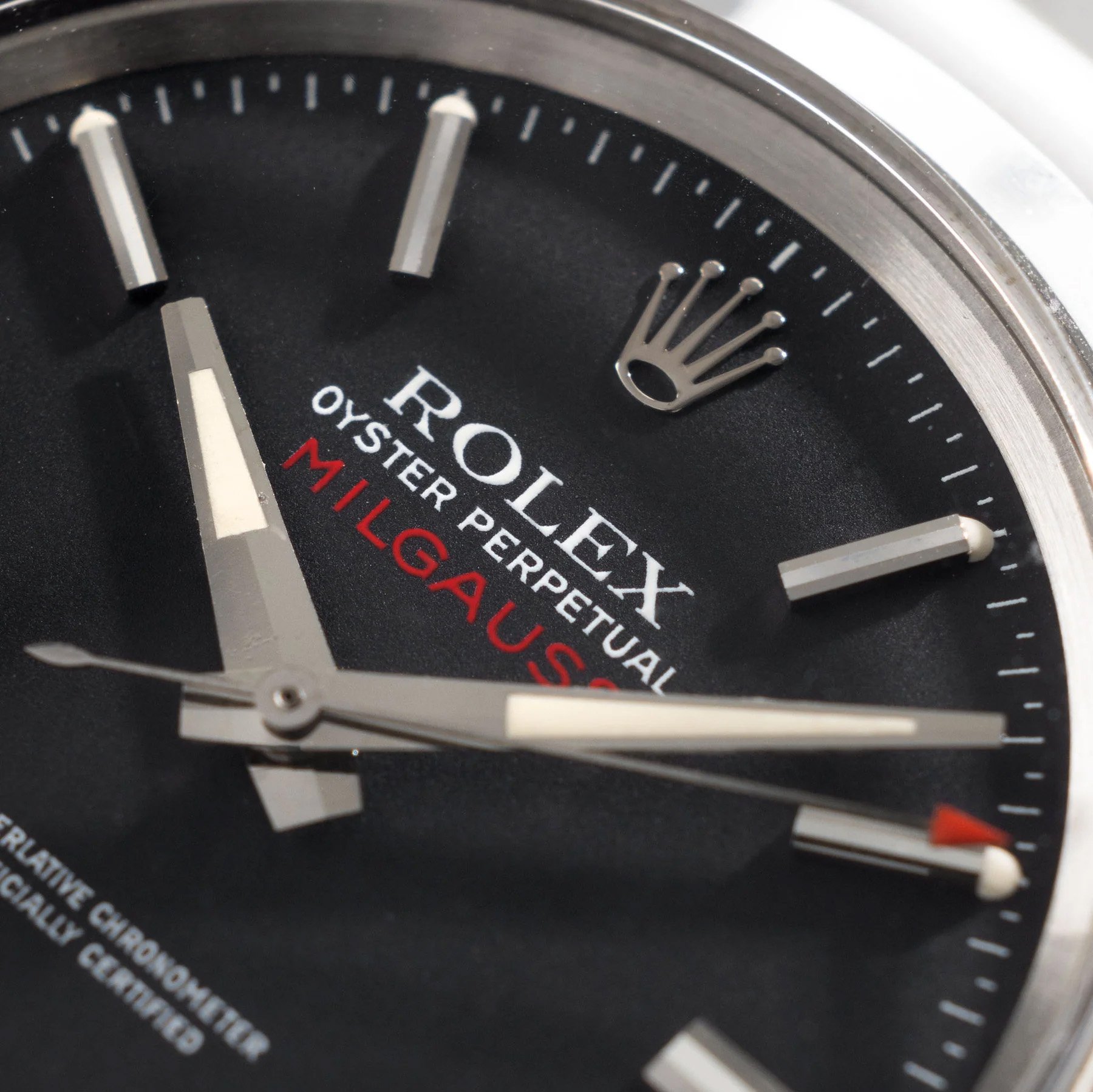
Image: Boulan & Sons
Inside the case with a Faraday cage, the brand also used a new movement. Caliber 1580 replaced the previous Caliber 1080 and increased its frequency from 18,000 to 19,800 vibrations. The power reserve also reached 48 hours, and in 1972 Rolex introduced a hacking function as a new feature.
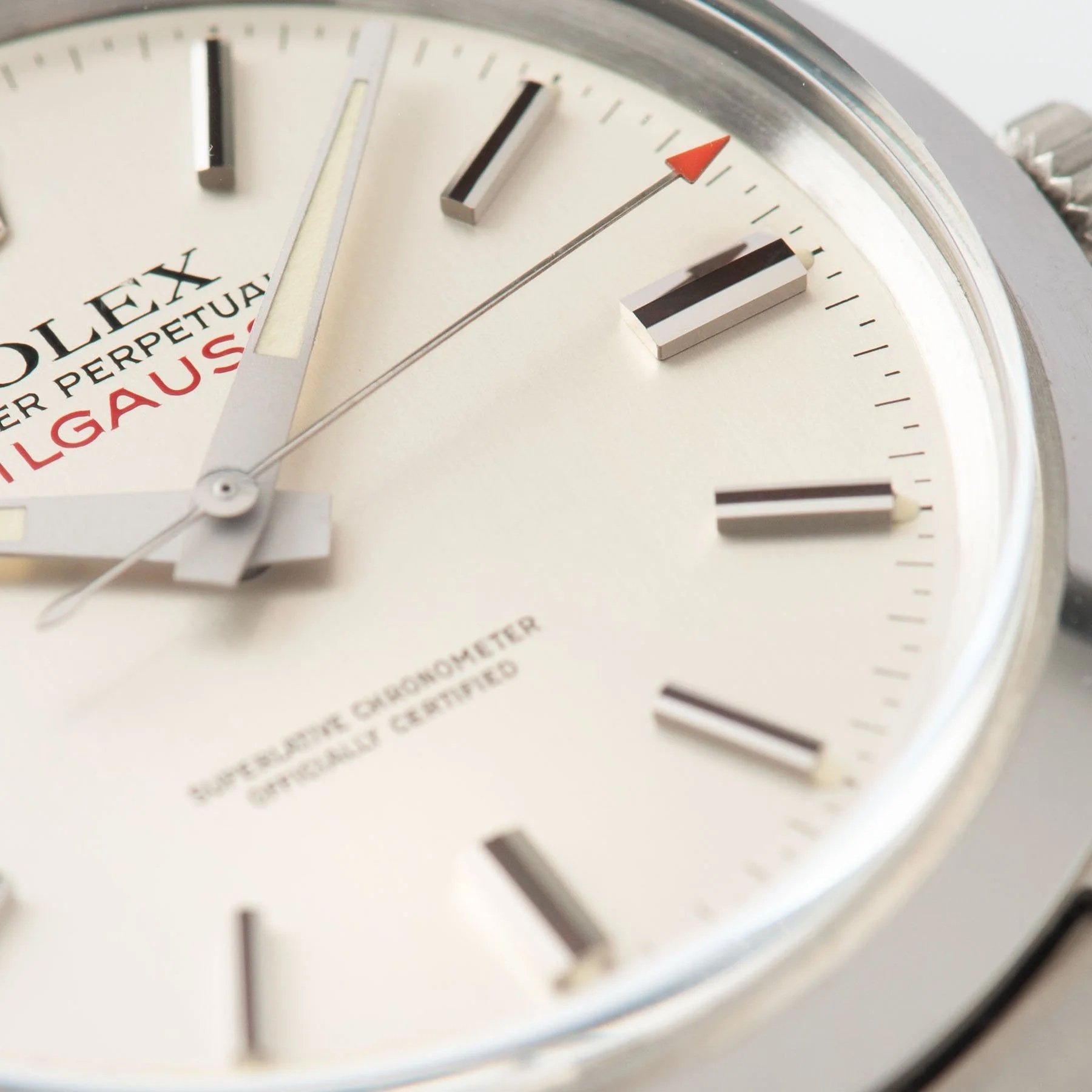
Image: Boulan & Sons
Despite its modern aesthetic and long production run, the Milgauss Ref. 1019 was never a big seller. But as we know, in the world of Rolex, rarity means high prices. That’s why these models command such high prices when they go on sale. The discontinuation of this reference in 1988 also meant that the Milgauss name was no longer part of the Rolex collection.
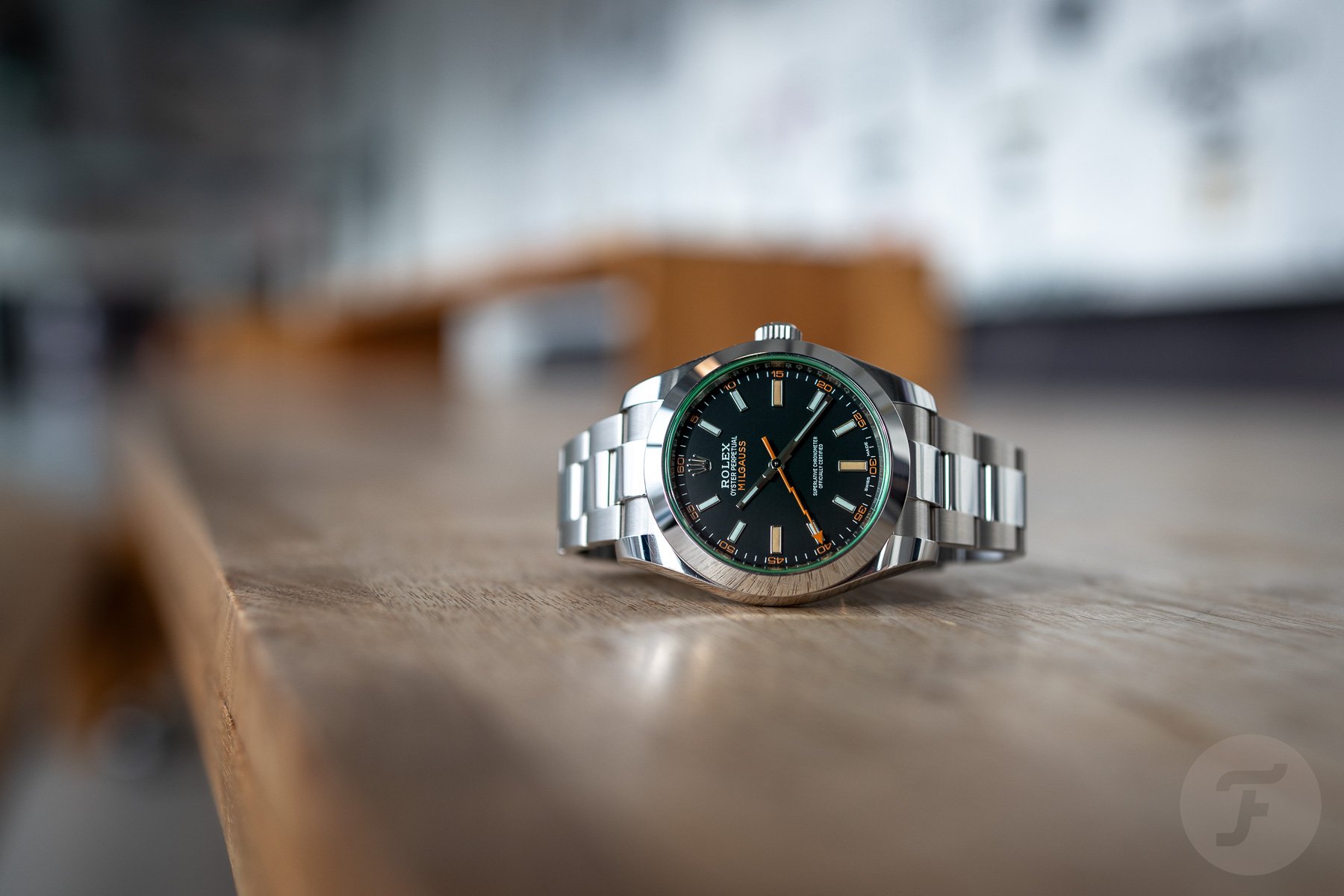
Rolex Milgauss Ref. 116400
All that changed in 2007 when Rolex introduced three new Milgauss models at that year’s Baselworld. The Milgauss Ref. 116400 was a modern Rolex that combined both styles. 1019 and 6541. The first two versions featured a black dial and a white dial, both with orange accents.
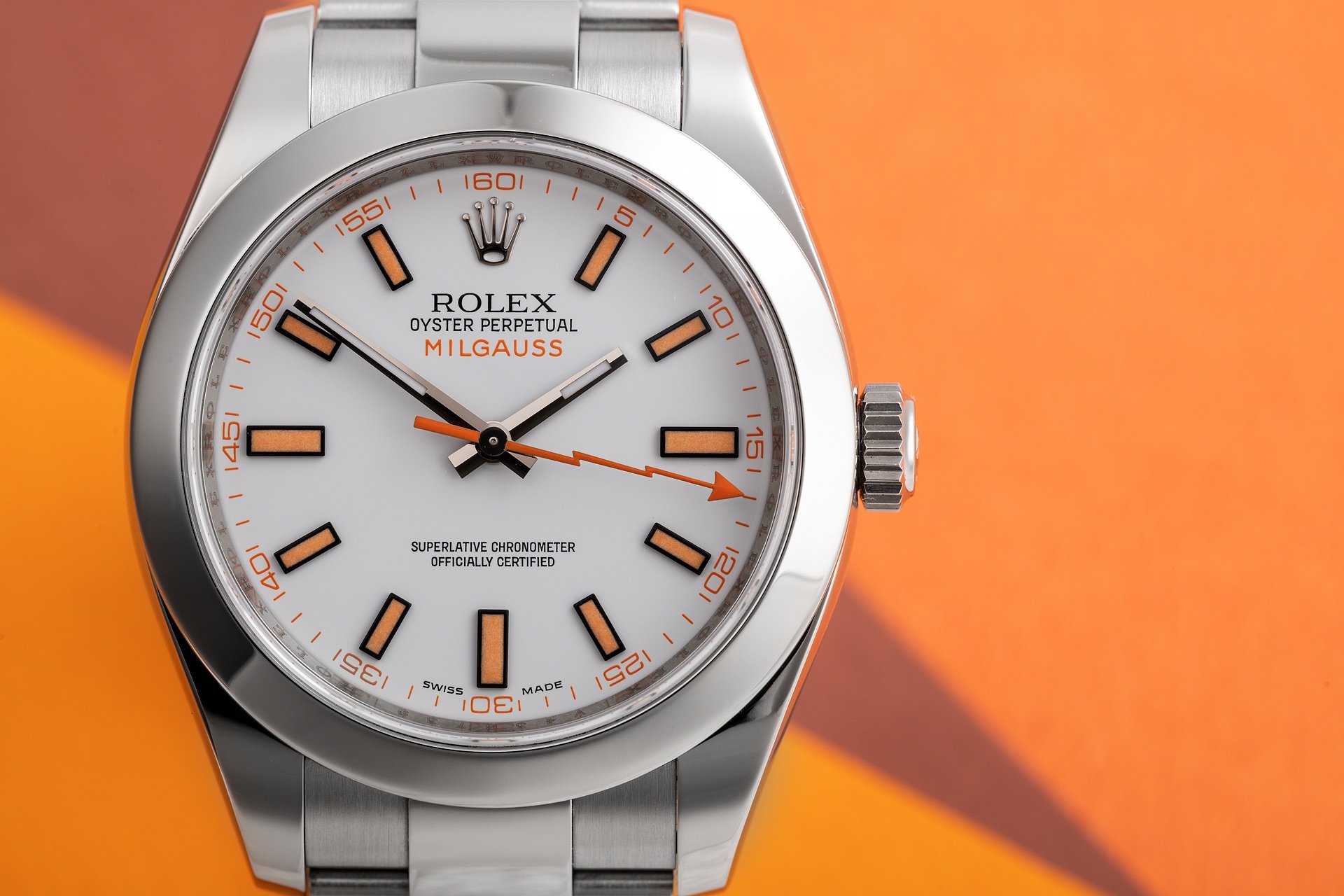
Image: Watch Club
The third model is the Ref. 116400GV (Glass Veil) using green sapphire crystal. A special anniversary model commemorating the 50th anniversary of Milgauss. The three new Milgauss models had larger 40mm cases and sported spectacular lightning bolt-shaped seconds hands.
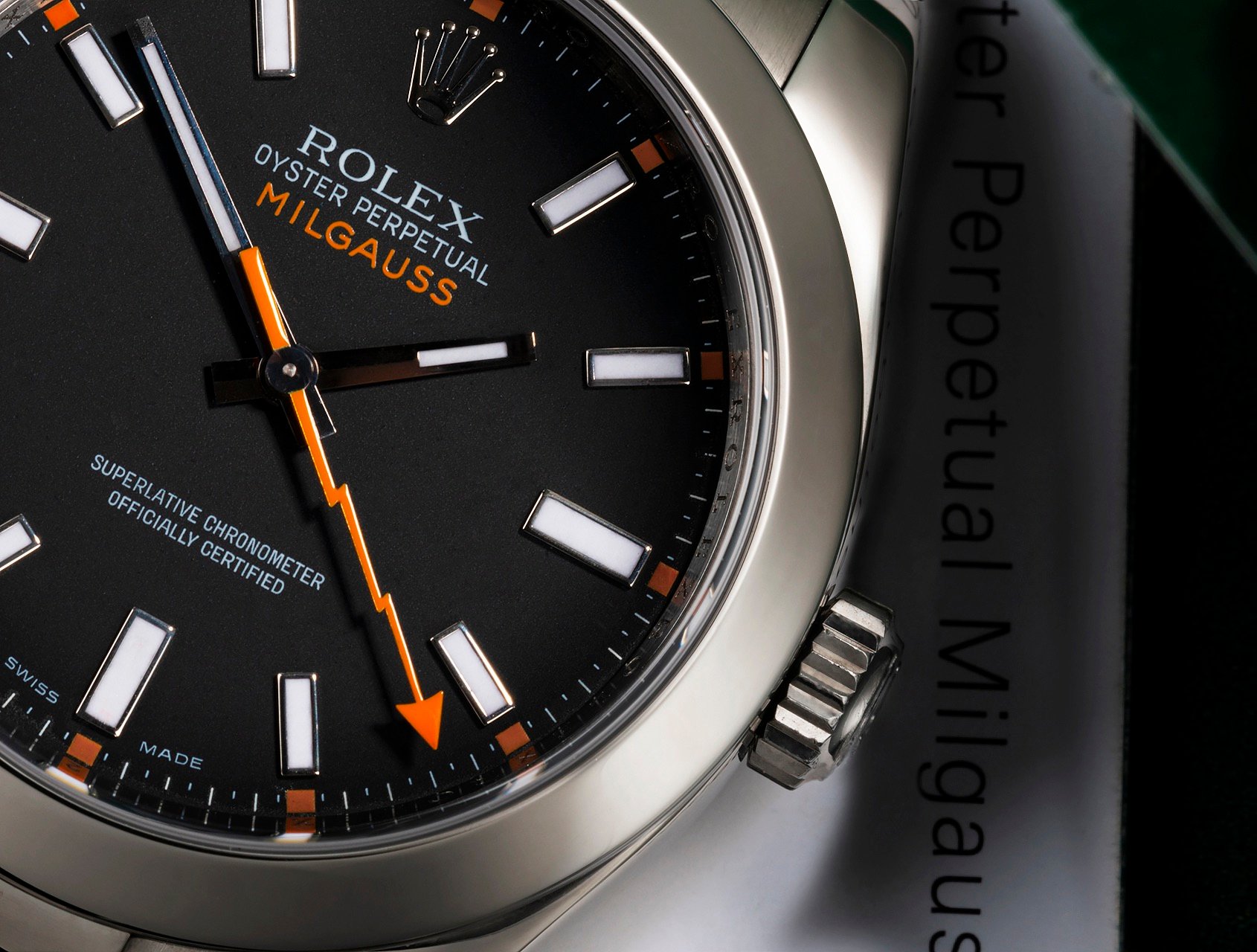
Image: Watch Club
All three versions perfectly capture the eccentric characteristics of previous vintage models, but in modern Rolex style. Of course, the ones with green sapphire crystals stand out the most. This is because it adds extra elements that bring the eccentric character up to 11.

Inside the case, Rolex has installed the caliber 3131. This automatic movement was still housed within a Faraday cage, but also featured a blue Parachrom balance spring. The pallet and escape wheel were made of amorphous, diamagnetic nickel phosphorus.
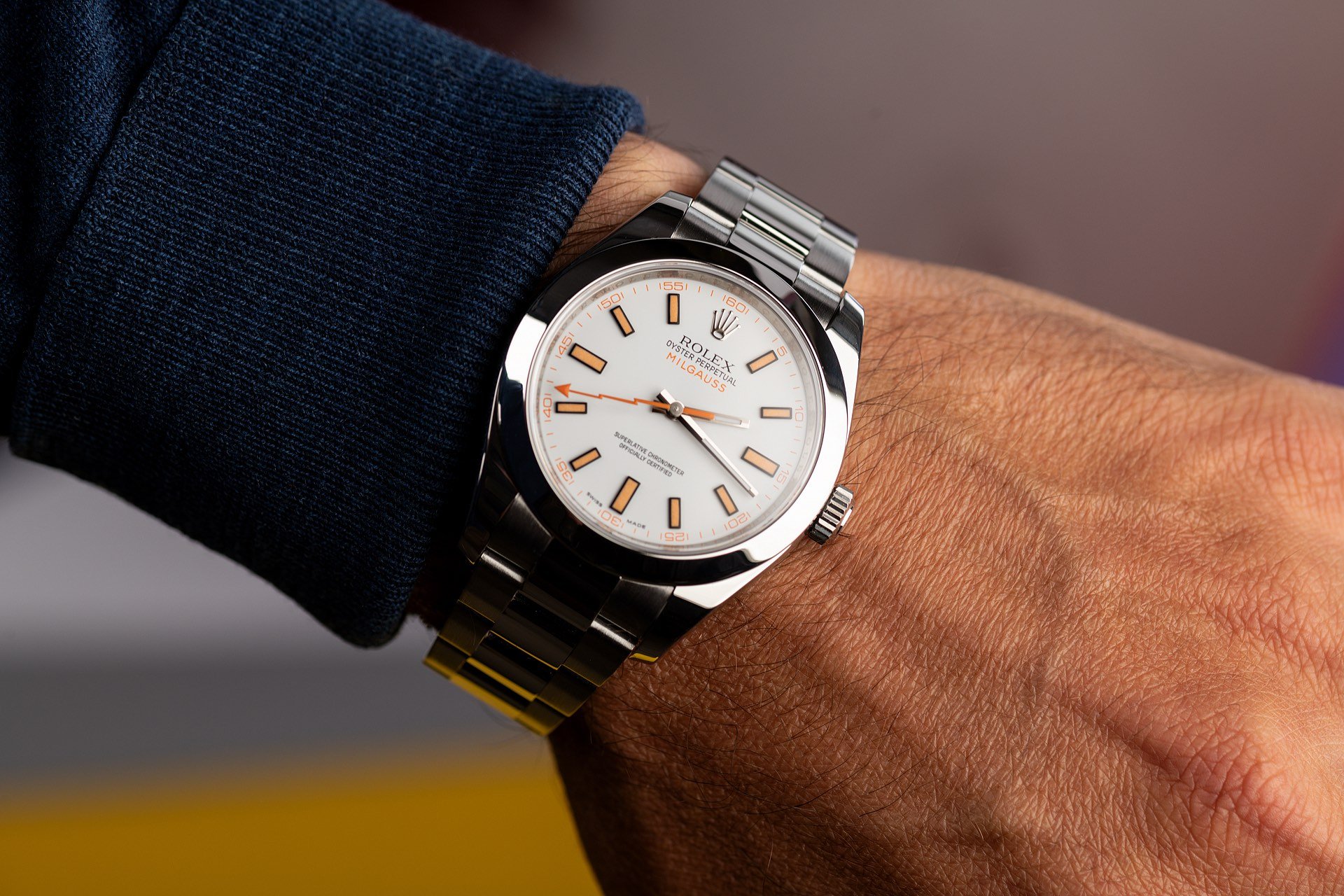
Image: Watch Club
End of production of models using regular sapphire crystal
In 2016, Rolex discontinued the standard black dial and white dial versions after nine years of production. As a result, only the version with a black dial and green crystal, and the Z-Blue version, which we will discuss shortly, remained in production. Again, the standard Milgauss model was not a huge commercial success. But years after those two versions were discontinued, people jumped on this model as if it were the next must-have Rolex. Nowadays, both can be purchased for less than 8,000 euros, making them attractive products.
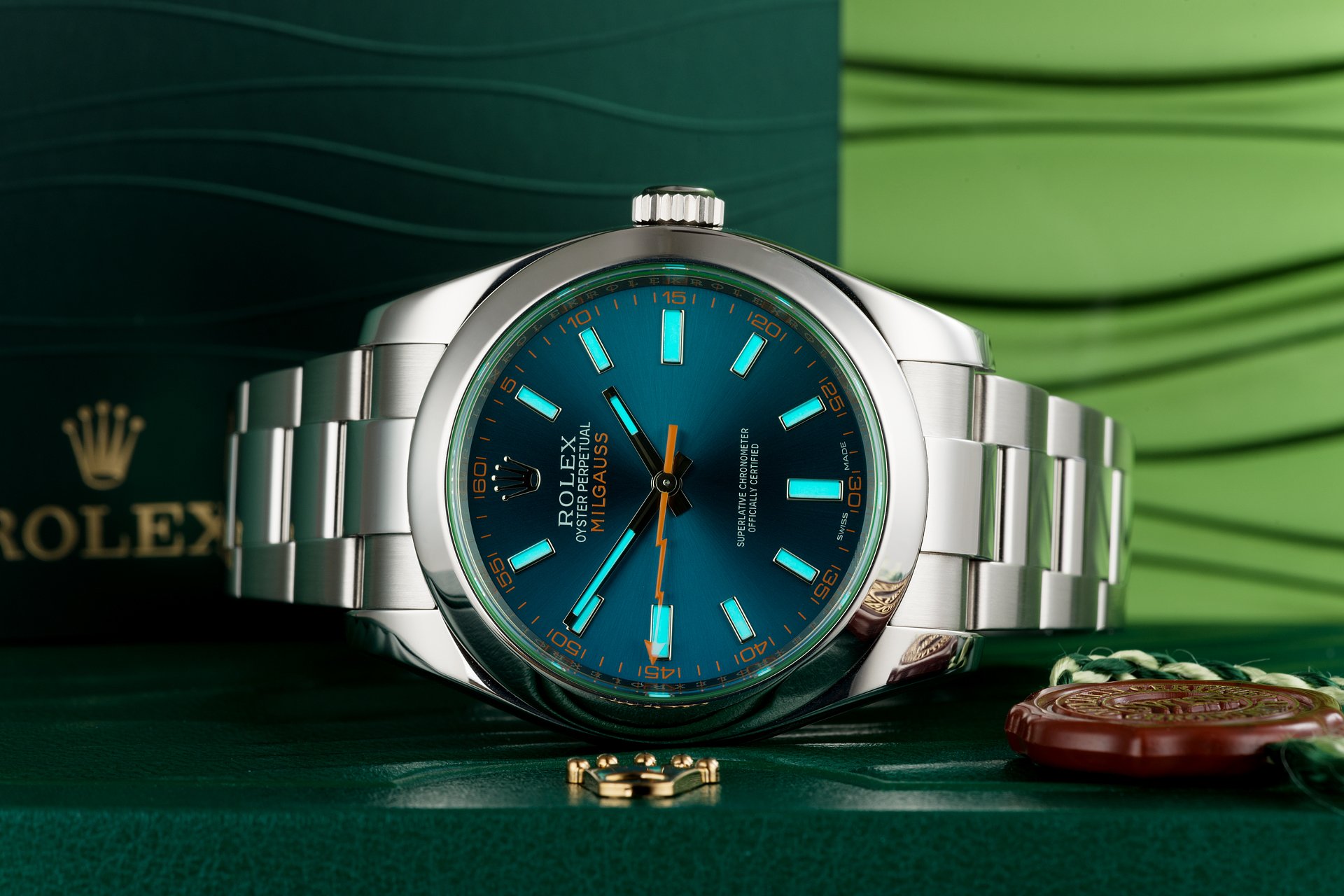
Image: Watch Club
Rolex Milgauss Ref. 114600GV Z-Blue
This brings us to the final Milgauss model. The Z-Blue version of the Milgauss debuted in 2014, so Rolex has produced all four modern Milgauss versions for two years. After the white and black dial versions with the regular sapphire crystal were discontinued, the two versions with the green sapphire crystal remained in production until 2023.
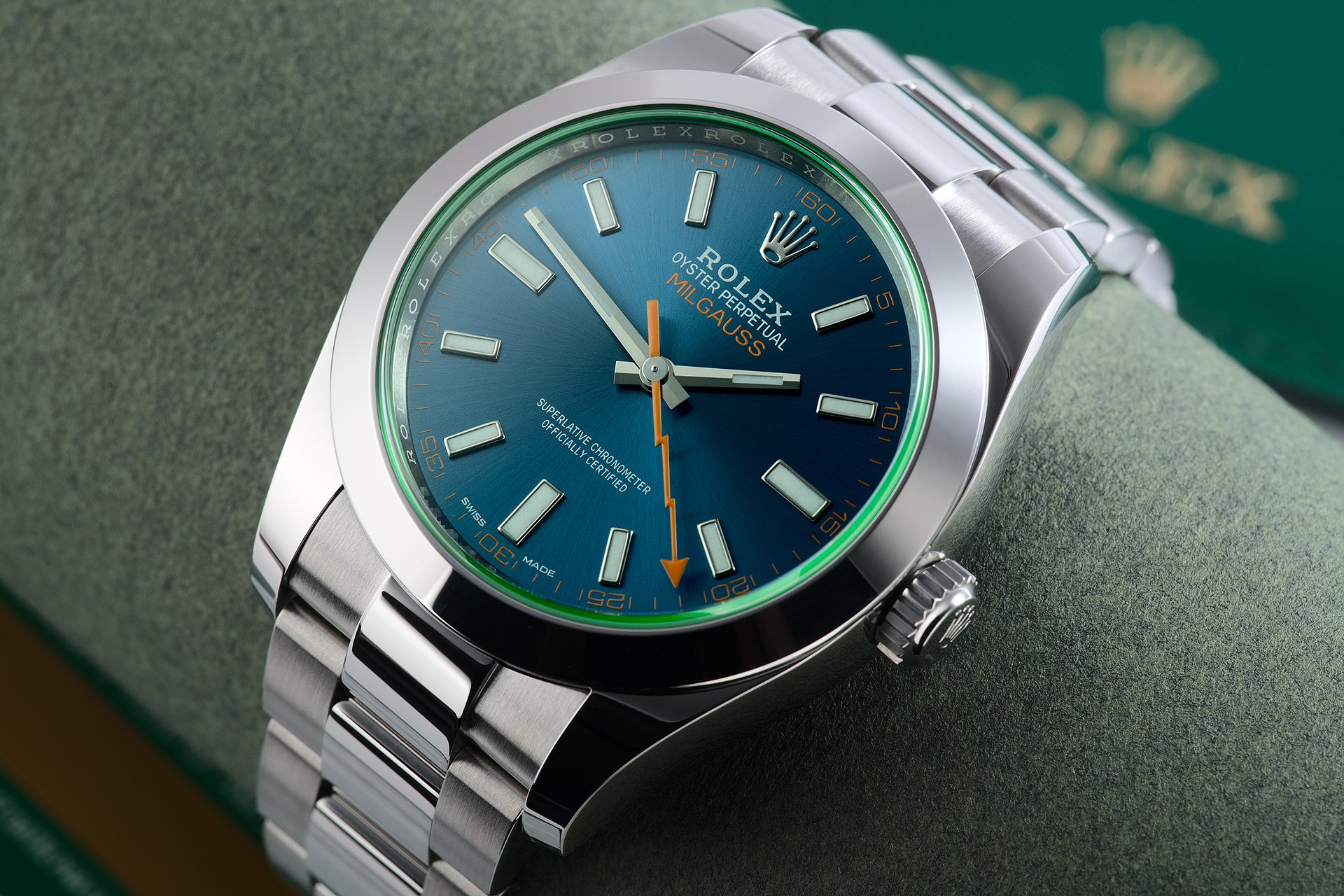
Image: Watch Club
The Z-Blue model features a bright electric blue sunray dial that shines in natural light. The combination of orange details and green sapphire makes this a quirky and very colorful watch. However, despite being technically on par with other references, this Z-Blue version has a lot of fans. 116400 variations. As it happens, I think that’s a bit over the top, whereas the black dial version hits a nice spot between quirky and serious.

Image: Watch Club
However, its popularity is reflected in its price on the secondary market. At the time of writing, asking prices start at around 10,000 euros and go up to 15,000 euros if unused. By comparison, the asking price for the black dial version with green sapphires starts at around 8.5,000 euros and goes up to 15,000 euros. In today’s market, the last generation of Milgauss models remains a great choice. It looks great and hasn’t lost any of its relevance.

Final Thoughts on This Week’s Top 5
This makes it questionable whether the Milgauss will return to the Rolex collection. At Fratello, we love the brand’s quirky engineer watches, so we’re happy to see their modern, updated version. Whether that will happen remains to be seen. Rolex has many popular sports models, but the quirky Milgauss will never become the brand’s biggest commercial success.
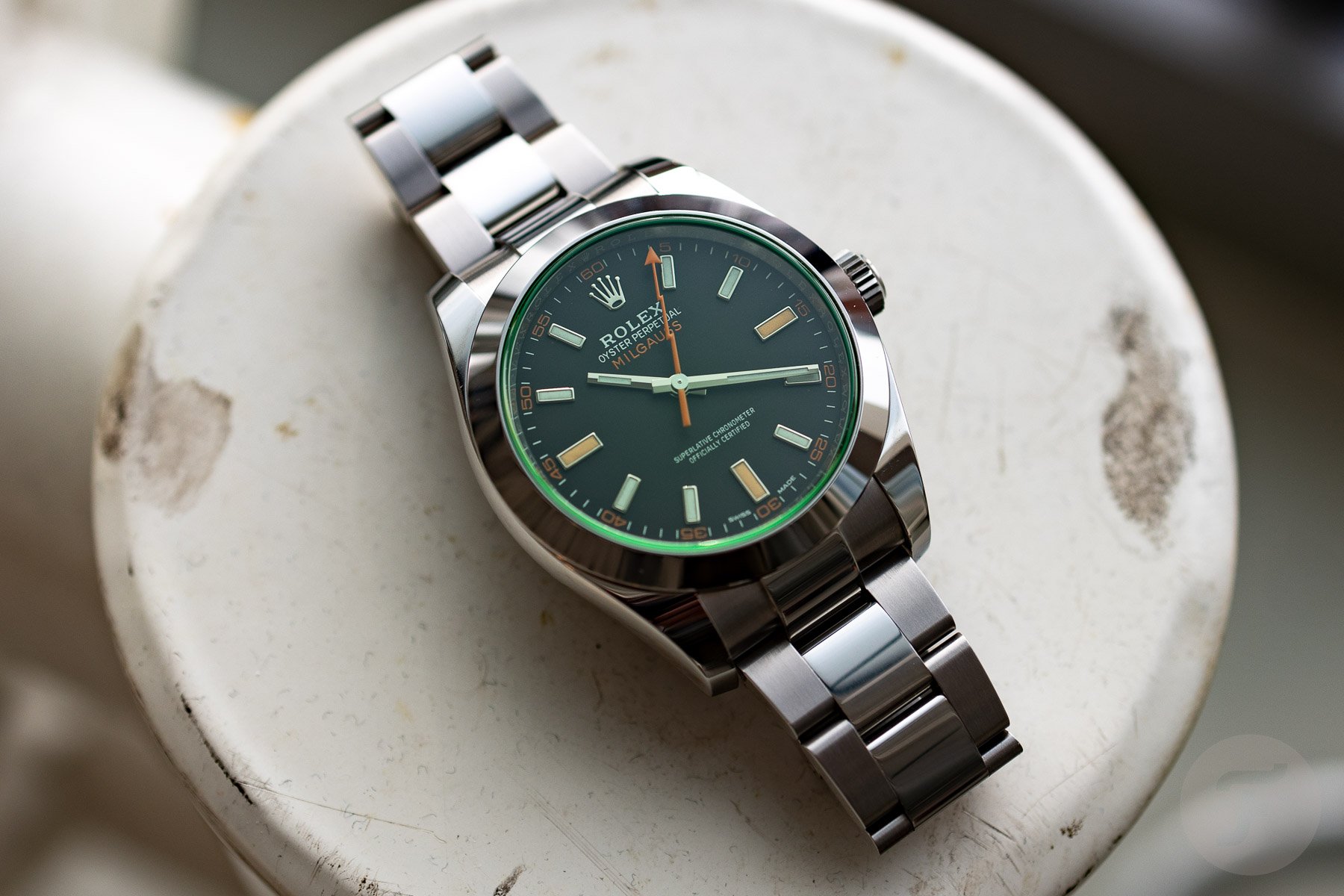
Again, neither the 1908 nor the Air-King occupy the top spot in the current collection. And with a story like Milgauss, this product always deserves a place in your collection as far as we’re concerned. But what do you think about the Rolex Milgauss? Let us know in the comments your favorite version and whether you’d like to see it return. We’ll be back next week with another Top 5.
![[F]Top 5 Rolex Milgauss models from Fratello [f]top 5 Rolex Milgauss Models From Fratello](https://bellamywatches.com/wp-content/uploads/2024/11/FTop-5-Rolex-Milgauss-models-from-Fratello-768x512.jpg)